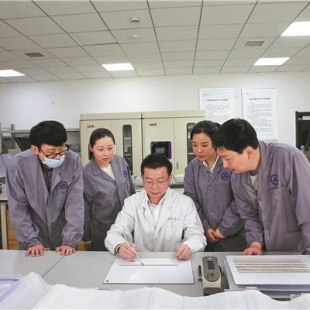Bringing words to life

Based on Fang's techniques, Jingzhou Cultural Relics Protection Center has helped more than 90 cultural institutes and museums nationwide to restore such documents, and more than 80 percent of the strips found in water-saturated environments in China are restored at the center, says Fang.
The restoration plan for each strip varies. "Each of the plans is made according to the state of the item. Even if the strips are unearthed from the same tomb, the state of each one can vary. We make an analysis and detect any problems, then design the plan and the technological means we will adopt around those findings," says Fang.
For example, in 2020, Fang and his colleagues accepted the task to restore a batch of strips found in 1973 in a Han Dynasty tomb in Dingzhou, Hebei province. The tomb had, at some point, been set on fire by looters, so the strips were carbonized and were very brittle when handled.
In conjunction with some other institutions, they finally restored them to the extent that they became more stable for preservation, and the words on them, though vague, could be read, and with infrared photo technology, they got relatively clear photos of the words.
"Carbonized strips are extremely fragile. When we tried to restore their pliability, Fang directed us to experiment more than 70 different ways before we finally discovered the right materials to accomplish our goal," Shi Shaohua, head of the jiandu studio at the Jingzhou Cultural Relics Protection Center, told People's Daily.
Over the years, Fang and his colleagues have restored more than 100,000 strips, over 10,000 lacquerware items and wooden artifacts and 1,000 textiles.
There is often an interval for cultural relics from the time that they are unearthed to when they begin restoration, but for organic items, like the strips, there are risks that they, or the words on them, might not survive the process.
"As a result, there is a 'golden' time period for protecting such cultural relics. I cannot just pause my steps, since I believe that, the faster I work, the more precious items of cultural heritage I can rescue," says Fang.





































